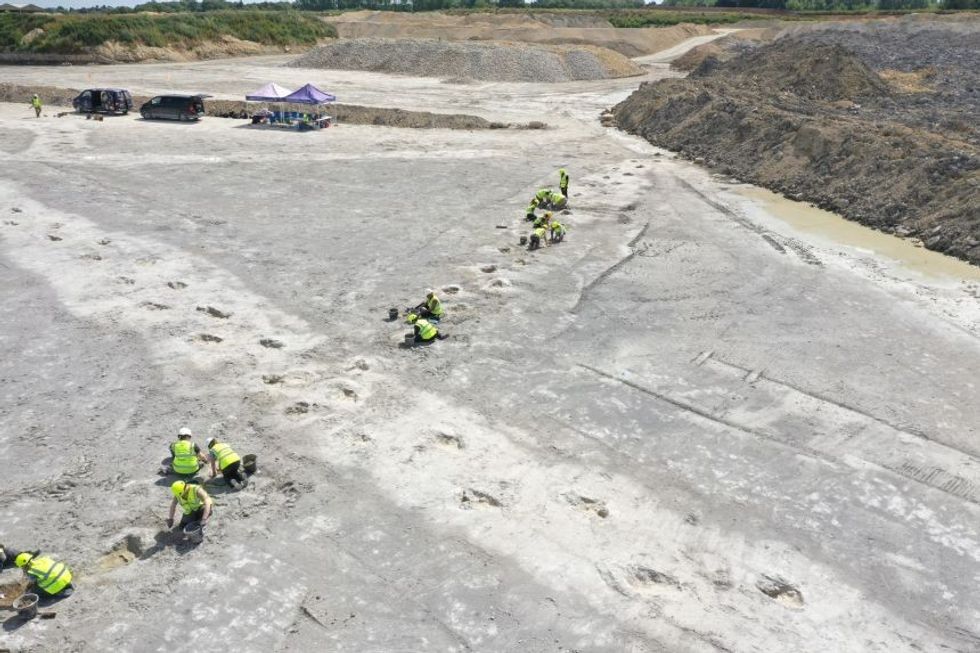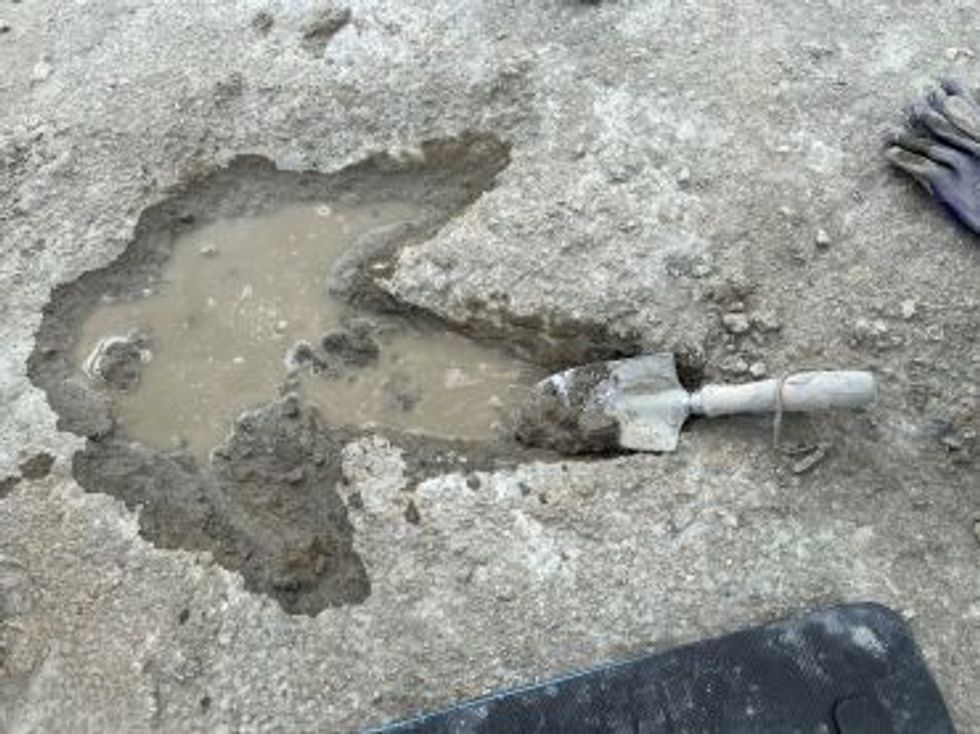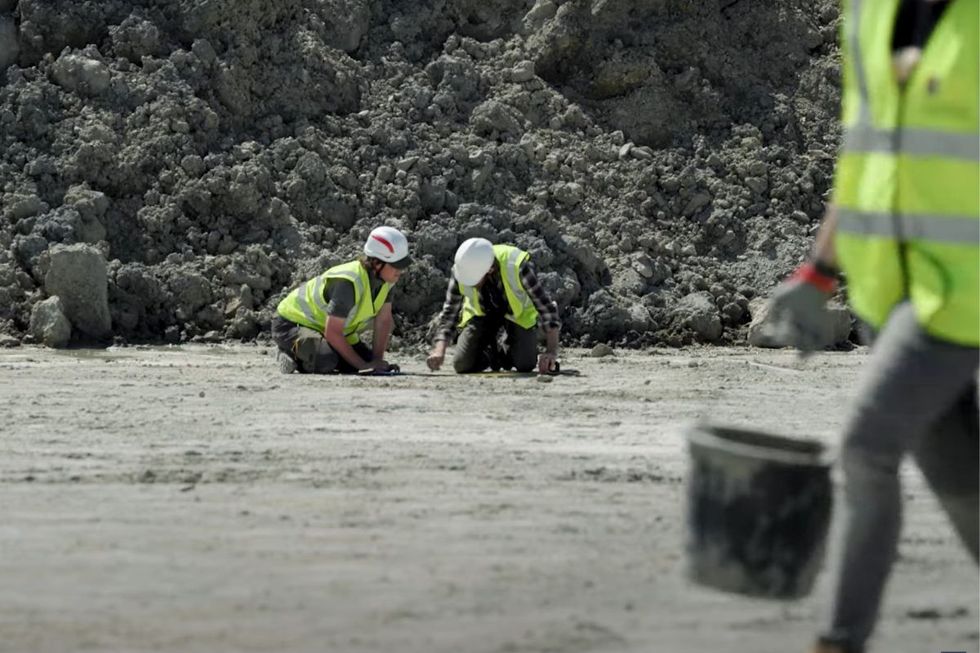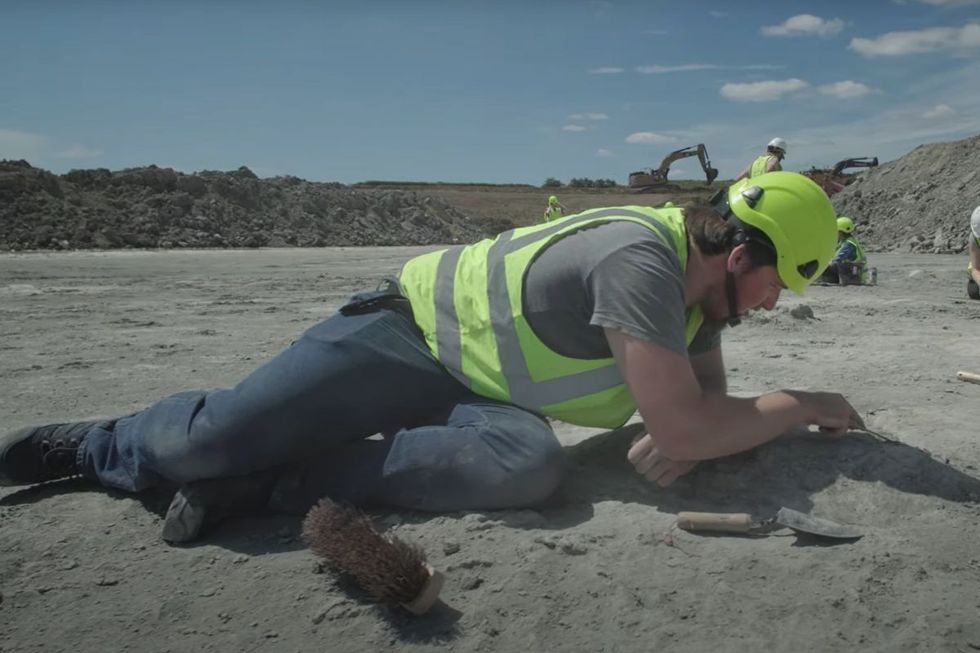‘Tingling moment!’ 200 dinosaur footprints discovered at Oxfordshire limestone quarry in major breakthrough
Britain’s largest dinosaur trackway has been unearthed in an Oxfordshire quarry, revealing over 200 footprints that date back 166 million years.
The remarkable discovery includes multiple tracks stretching up to 150 metres in length, created by both long-necked sauropods and meat-eating dinosaurs.
The historic find at Dewards Farm Quarry has drawn more than 100 scientists, students and volunteers who participated in excavation work over the summer.
The site features preserved footprints from the Jurassic period, made by massive Cetiosaurus dinosaurs and predatory Megalosaurus, offering unprecedented insights into the behaviour of these ancient creatures.

The extensive trackways, which criss-cross the limestone quarry floor, represent one of the most significant dinosaur discoveries in UK history.
A quarry worker made the initial discovery while operating a digger, encountering several unusual humps in the ground at Dewards Farm Quarry.
The find sparked a major scientific investigation, drawing experts from across the country to study the ancient tracks.
Five distinct trackways have been identified so far, though researchers believe more could be discovered as only part of the quarry has been excavated.
Similar dinosaur tracks had previously been found at a nearby location in the 1990s.
Scientists believe the prints were preserved by a fortuitous event, possibly a storm that deposited protective sediments over the footprints, preventing them from being eroded away.
LATEST DEVELOPMENTS:
- Viking remains suggest Norse raiders may have been Britons’ ancestors returning home
- Stonehenge: Native Britons built sarsen stones after influx of European migrants
- Britain’s Atlantis? Archaeologists uncover Stone Age artefacts in North Sea

The excavation work has captured such significant interest that it will be featured in the new series of BBC’s Digging for Britain.
The ancient footprints reveal a time when these massive creatures roamed across what was then a shallow lagoon environment.
The tracks were preserved in mud as the dinosaurs traversed the landscape, offering a unique snapshot of their daily activities.
The sauropod tracks were left by Cetiosaurus, enormous four-legged creatures that could reach lengths of up to 18 metres.
The other tracks belong to Megalosaurus, which were agile hunters and represented the largest predatory dinosaur known from Britain’s Jurassic period.
The criss-crossing patterns of footprints across the limestone floor suggest these different species shared the same territory.

The environment would have been dramatically different from today’s Oxfordshire, with the dinosaurs moving through shallow waters and muddy terrain that eventually preserved their tracks.
Prof Kirsty Edgar, a micropalaeontologist from the University of Birmingham, described the discovery as “one of the most impressive track sites I’ve ever seen, in terms of scale, in terms of the size of the tracks.”
“You can step back in time and get an idea of what it would have been like, these massive creatures just roaming around, going about their own business,” she added.
Prof Richard Butler, a palaeobiologist from the University of Birmingham, highlighted the unique value of the trackways.
“The really lovely thing about a dinosaur footprint, particularly if you have a trackway, is that it is a snapshot in the life of the animal,” he said.
“You can learn things about how that animal moved. You can learn exactly what the environment that it was living in was like. So tracks give us a whole different set of information that you can’t get from the bone fossil record.”

To preserve this remarkable discovery, researchers employed extensive documentation techniques, taking over 20,000 photographs to create detailed 3D models of the footprints.
The team also made physical casts of the tracks to aid in their analysis and preservation efforts.
The future of these ancient trackways remains under discussion, with quarry operators Smiths Bletchington working closely with scientists and Natural England.
No final decision has been made regarding the long-term preservation of the site.
The collaborative approach between industry, scientists, and conservation authorities demonstrates the importance placed on protecting this unprecedented glimpse into Britain’s prehistoric past.
The extensive documentation efforts ensure that regardless of the site’s ultimate fate, these remarkable traces of dinosaur behaviour will be preserved for scientific study.

